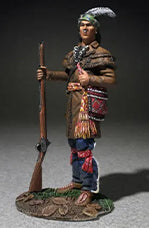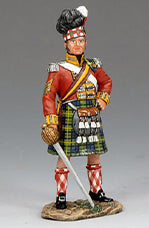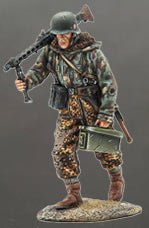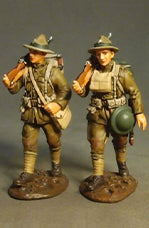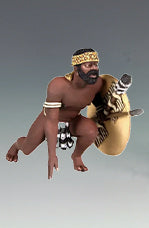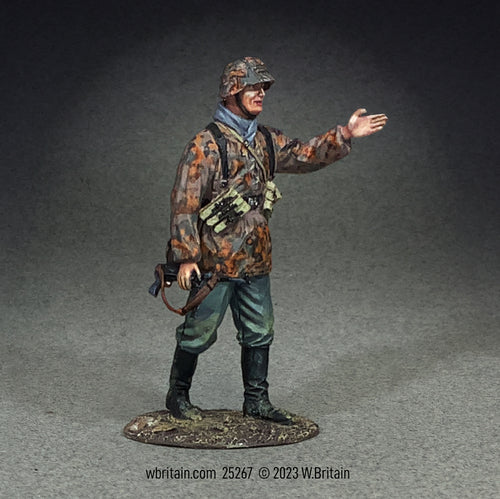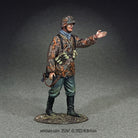25267 - German Waffen SS Grenadier Directing Movement, 1941-45
Couldn't load pickup availability
NEW! IN STOCK!
German Waffen SS Grenadier Directing Movement, 1941-45
In 1930, the German military copied the Italian practice of printing camouflage on tents and rain gear. In 1935, the paramilitary formations of the Waffen SS also adopted printed camouflage patterns but in designs unique to them. These designs were based on the patterns of light and shadows, creating soft naturalistic colors and shapes, rather than the angular disruptive patterns used by the German army. By the end of the war, all branches of the German armed forces produced full combat uniforms in a number of printed camouflage patterns. Both army and Waffen SS patterns worked very well as long as the soldiers remained still – any camouflage effect was nullified when the soldiers moved.

